Ornamental Nedzwiecki apple tree in the garden: all about growing
Apple tree of Nedzvetsky is a decorative flowering tree. She owes her discovery to botanist Nedzvetsky, who brought the fruits of a beautiful wild apple tree from an expedition to Asia and handed them over to biologist G. Dick. The latter raised a tree from seeds and gave it a detailed description, named it Nedzvetsky and introduced it to the culture of Germany. Due to their spectacular appearance, apple trees quickly gained recognition and rapidly spread to North American and European countries.
According to historians, the Nedzwiecki apple tree has been growing in the wild for thousands of years. Since its introduction into culture, at the end of the 19th century, several varieties of this variety have appeared. They differ in the size of apples and leaves, as well as in the color and shape of the crown. Over time, hybrid forms of apple appeared, which are successfully used to decorate parks, squares and personal plots.
Content:
- Distinctive features of the Nedzvetsky apple tree
- Competent planting of a decorative apple tree
- Optimal care for Nedzwiecki's apple tree
- Pruning and wintering rules
- Pest and disease threats
Distinctive features of the Nedzvetsky apple tree
Apple trees of Nedzvetskiy grow in the form of trees or shrubs and can reach eight meters in height. The shape of the plant depends on the diligence and imagination of the gardener. The life span of the tree is about 65 years. The trunk of the tree is covered with brownish-gray bark with a red tint. The branches are colored purple-brown with a purple tint.
With the onset of spring warmth, crimson leaves appear on the branches, which instantly transform the tree. With the approach of summer, the leaf plates change their color: from above they become dark green, and from below - purple and pubescent. The leaves are ovoid with a pointed tip and small jagged edges.
Ornamental apple trees of Nedzwiecki bloom in lilac-pink color.
Flowers about 5 cm in diameter consist of five petals and are formed on thin white peduncles that densely cover the entire tree. The flower buds are pink with a purple tint, and the petals are painted in crimson tones. Flowers are collected in inflorescences of several pieces. Ornamental apple trees begin to bloom in May.
At the beginning of autumn, small fruits begin to ripen on the trees, up to two centimeters in diameter. The apple is round or slightly elongated. The peel is colored in ruby shades with a light waxy bloom. Dark pink flesh is hidden under the skin. The fruits contain about nine seeds. The taste of apples is not pronounced sweet and sour or insipid. Apples can remain on trees for most of the winter, so the apple tree retains its decorative effect almost all year round.
The following advantages of the variety can be distinguished:
- strong immunity to diseases and pests
- fast growth
- resistance to frost, drought and heat
- survival on any soil
- undemanding to care
- seed reproduction
The disadvantages include susceptibility to scab disease and long periods of growing seedlings.Nedzwiecki's apple trees can adapt to any climate, so they can be cultivated anywhere in the world.
Competent planting of a decorative apple tree
The key to active development and longevity of ornamental apple trees directly depend on compliance with the rules when planting trees. Planting seedlings can be carried out in the autumn or spring. In the northern regions, it is recommended to plant seedlings in the middle of spring, until the extreme heat sets in.
In the central and southern regions, autumn tree planting is preferred. This is due to the fact that since the end of September there has been a decrease in temperature and abundant precipitation. If the fall is dry, then the apple trees will need to be regularly watered.
Wells for planting Nedzvetsky's apple trees are prepared two to three months before the expected timing of the procedure:
- Dig holes 70 cm deep and wide.
- With high groundwater, a drainage layer of fine gravel, at least 25 cm high, is laid on the bottom of the holes.
- The soil extracted from the planting pits is mixed with peat and sand to improve the quality of the soil.
- Part of the potting mix is put back into the pit.
- The remaining soil and planting holes are covered with foil before planting seedlings.
Apple seeds must be stratified before sowing. This procedure is not carried out if freshly harvested seeds are sown. Seed material is soaked in a growth stimulator according to the instructions.
Planting containers are filled with fertile soil: garden soil is mixed with ash, superphosphate and potassium sulfate.
The prepared seeds are placed in containers and watered regularly. Seedling care remains the same. When the seedlings grow up and get stronger, and the weather is favorable on the street, they are planted in prepared pits.
The place where the landing pits were prepared should be well lit by the sun. The procedure for planting young apple trees is carried out according to the following scheme:
- The seedlings are placed in the middle of the pit, carefully spreading the roots, and a support stake is driven in next to it, at least one and a half meters high.
- The holes are filled with soil so that the root collars of the seedlings remain at ground level.
- After planting, young trees are watered abundantly with warm water.
- If necessary, fill up the earth and form a near-stem circle so that the water does not spread during irrigation.
After planting procedures, apple trees are recommended to shade for a month. According to experienced gardeners, the best planting material is seedlings no older than two years of age, because older trees are harder to root and get sick more often.
Optimal care for Nedzwiecki's apple tree
Active growth of Nedzvetsky apple trees is observed in the third year after planting, but the trees need constant care.
- Irrigation. Young specimens need watering at intervals of four weeks. One tree takes at least four buckets of water. But if the weather is dry, then the apple trees should be watered four times more often. Adult Nedzwiecki apple trees are watered four times a season. As many buckets of water should be poured under each tree as the apple tree is old: the first irrigation is carried out before the beginning of the growing season, but after the snow has melted; the second watering should be done 20 days after the beginning of flowering; the third - four weeks before harvest; the fourth - during active leaf fall. This is water-charging irrigation before winter. In severe drought, apple trees should be watered as needed, but not more than once a week. In the summer, it is recommended to mulch the near-stem circle with mown grass or peat.
- Weeding and loosening. Root system Nedzvetsky's apple trees are located close to the surface of the earth, therefore, the soil should be loosened with extreme caution. The procedure is carried out after watering and at the same time weeds are removed.
- Fertilization. Ornamental apple trees should be fed twice a season. The first feeding is given in the spring, and the second in the autumn.In regions with harsh winters, it is recommended to carry out a third podwinter top dressing, so that the trees can more easily survive the frosts. Fertilizers can be used mineral and organic compositions. And the procedure itself can be carried out according to different schemes. Top dressing should be done after watering. After the procedure, it is also recommended to water the trees abundantly. Experienced gardeners often combine top dressing with preventive treatments of the garden. Trees can be sprayed with mineral compounds and wood ash solution.
Pruning and wintering rules
Pruning of Nedzvetsky's apple trees begins in the second year of life in order to stimulate the growth of side shoots. All branches are shortened by two-thirds of their length. All damaged and diseased branches are also removed. In the third year, when active growth of trees begins, all shoots directed upward and into the crown are cut out to stimulate the growth of horizontal branches.
The pruning procedure should be carried out in early spring, before the start of sap flow, and all cuts should be treated with garden varnish or oil paint.
To form a beautiful spreading crown, pruning should be carried out annually. Apple trees of Nedzvetsky, especially young trees, need preparation for the winter period. To protect trees from frost, an earthen embankment is formed around the trunk and insulated with fallen leaves.
The trunk is wrapped with paper material or fenced off with a net to protect the bark from rodents. With the arrival of spring, the roots of the tree are exposed to avoid diaper rash.
Pest and disease threats
Ornamental apple trees of Nedzvetsky are immune to diseases, and the fruits do not differ in special taste and juiciness, therefore they do not attract pests. But gardeners still recommend preventive measures, especially if the trees grow in the garden. Prevention consists in whitewashing the trunk with chalk or lime. All root growth must be removed.
If the tree has been attacked by pests or a disease has struck it, then all damaged parts of the crown must be cut off and treated with a special chemical. The safest remedy is Zdorovy Sad.
Basically, Nedzvetsky apple trees are used as ornamental plants.
They are often planted as hedge and is used in group plantings. In addition, the fruits of apple trees can be eaten and preserved. In addition, the apple trees of Nedzvetsky are unpretentious, therefore they are highly valued by gardeners.
More information can be found in the video:



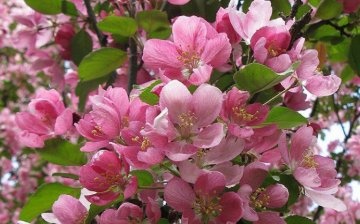
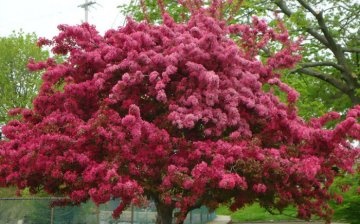
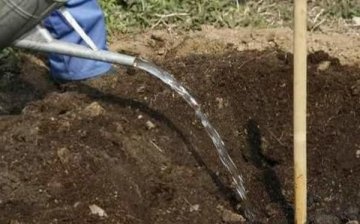
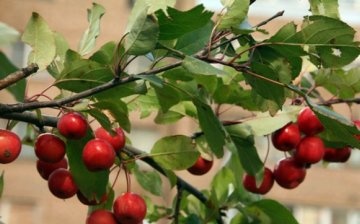
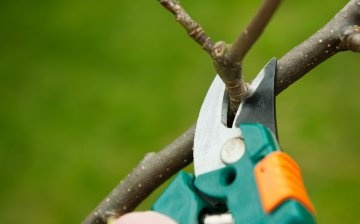
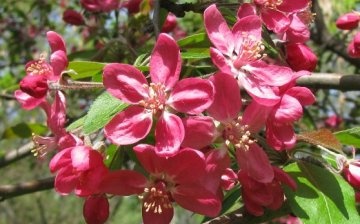







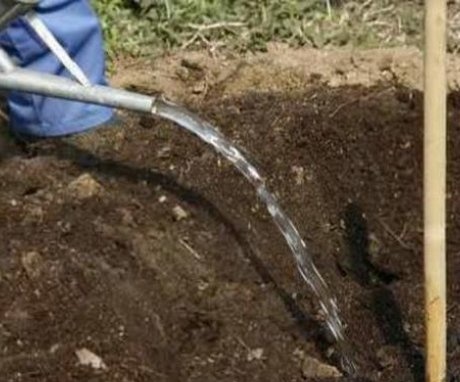

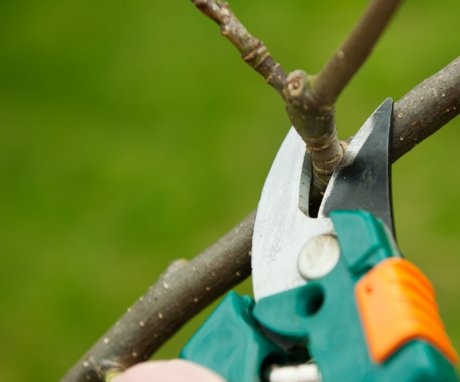
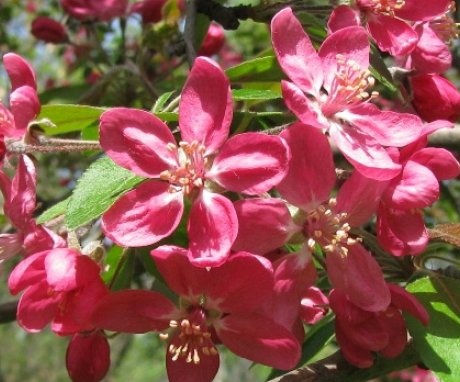
This apple tree blooms very well in late May and early June. At this time, she is very beautiful, all in pink flowers, since the flowering is quite abundant. When the flowering period passes, the apple tree loses its entire decorative appearance, and the next beauty will only be in a year.